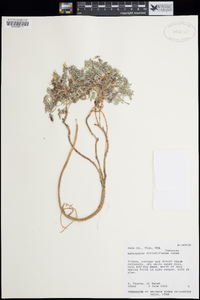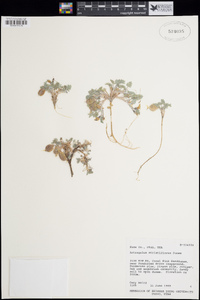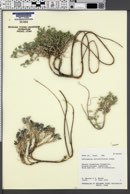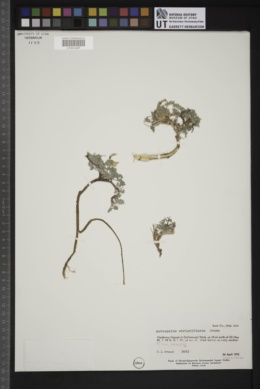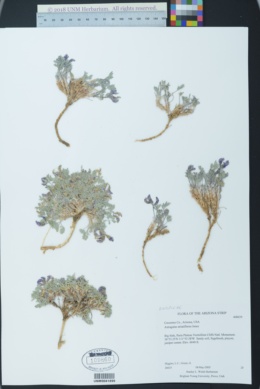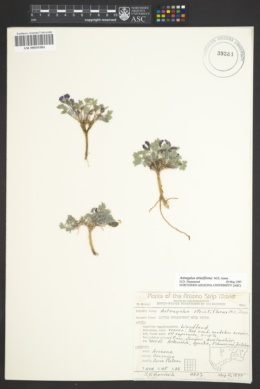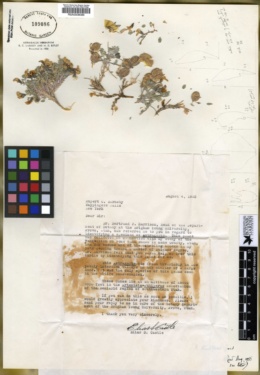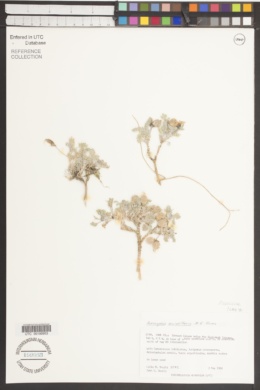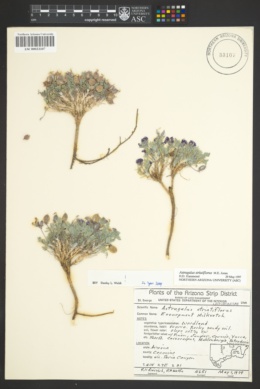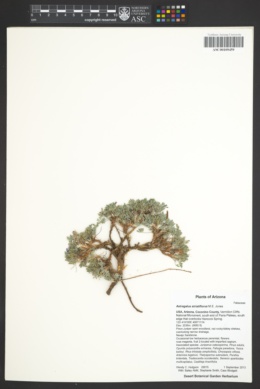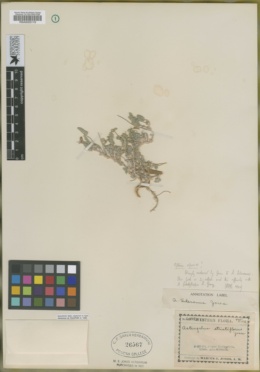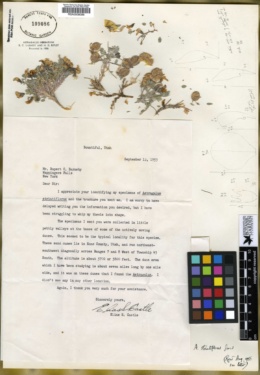Astragalus striatiflorus
|
|
|
|
Family: Fabaceae
Escarpment Milk-Vetch, more...escarpment milkvetch
|
Welsh, S. L., Atwood, N. D., Goodrich, S., & Higgins, L. C. (2015). A Utah flora (No. Ed. 5). Brigham Young University. Astragalus striatiflorus M. E. Jones, Proc. Calif. Acad. Sci. II. 7: 643. 1895. [Type: Utah, Washington Co.?: above Springdale, in red sand, M.E. Jones 6080k, 25 Sept. 1894, holotype POM!]
The Escarpment milkvetch is not known from contemporary collections near Springdale, and the report of the type specimen taken exceptionally late in the season in Washington County in flower only is perhaps due to a mislabeled specimen, or possibly it came from a disjunct population in Zion Canyon not subsequently discovered. Jones’ published itinerary (Munz |




